Adjunct Professor Derek Muir of the Department of Chemistry is one of 88 new appointees to the Order of Canada.
“Derek Muir is a word-leading authority in environmental chemistry, specializing in contaminants,” reads the online version of the December 18, 2024 announcement. "A research scientist emeritus at Environment and Climate Change Canada, he is renowned for his work in the Arctic, which focuses on pollutants in fish and marine life. Spanning Canada, the United States and Europe, his research has influenced international policies on chemical management.”

Muir said he was honoured by the recognition and emphasized that the body of scientific work being celebrated was not his alone. “I was fortunate to be at the right place at the right time to contribute and eventually to lead or co-lead projects and assessments on priority contaminant issues, with many contributors including graduate students at U of T Chemistry and University of Guelph.”
Professor Jennifer Murphy at the Department of Chemistry also applauded the Order of Canada appointment. “In addition to his remarkable research achievements over his career at Environment Canada, Derek Muir has been a generous contributor to our grad program as a collaborator, committee member and course instructor with a long-standing adjunct appointment."
Muir, who spoke at the Department of Chemistry Colloquium on January 10th, completed his BSc at McGill University’s downtown campus before moving into a PhD in agricultural chemistry on the Macdonald College campus. “After graduating in 1977, I was fortunate to get hired as a Research Scientist at the Freshwater Institute (FWI) in Winnipeg. I was able to build instrumental and laboratory capacity for analysis of PCBs, pesticides and flame retardants, while mingling with a world class group of scientists.”
In the 1980s, Muir's work expanded to include the Arctic. “At that time there was concern about contamination related to the Distant Early Warning radar stations, which had been largely abandoned in the 1970s and were known to have used large amounts of PCBs in electrical transformers."
"There was evidence that the Inuit had up to 5-fold higher PCBs than southern Canadians,” said Muir. “My lab got involved with a study of PCBs and other chlorinated pesticides in dietary samples of the community of Broughton Island (now Qikiqtarjuaq), led by the Chief Medical Officer of the Northwest Territories. Our results showed that the marine mammal tissues that were part of the traditional Inuit diet had relatively high PCB levels.”
Further analyses showed that PCBs, along with many other semi-volatile organics, were detectable in all biota across the Arctic. This indicated that the contamination was not caused by the radar stations, but rather that the Inuit’s traditional diet was exposing people to PCBs and other contaminants. “It was determined PCBs were coming in the air from southern Canada, USA and Europe. The PCBs were being used in urban areas and a certain amount of them got into the atmosphere and moved a long distance.”
“Frank Wania and U of T Professor Don Mackay were the first to model the global transport of PCBs. This work by myself, Frank, and many other scientists in Canada and Scandinavia provided the scientific basis for the Stockholm Convention on Persistent Organic Pollutants, which includes long range environmental transport and potential adverse effects on humans in remote environments, as part of its assessment criteria.

In 1997 Muir moved to the Canada Centre for Inland Waters (CCIW) and into a senior scientist position, which he held until retiring in 2022. In that position he led a research group that continued to study contaminants in the Arctic as well as in the Great Lakes, and in lakes across Canada, including in the Athabasca oil sands region. “The wide scope of activity was made possible by the excellent support we had for field and lab work, and through collaborations with Professors Scott Mabury and Frank Wania at U of T, as well as Professor Keith Solomon at University of Guelph.”
"Dr Jon Martin (now at Stockholm University) did the first studies on the bioaccumulation of perfluorinated alkyl acids and the first measurements of those “forever chemicals” in the Canadian Arctic as part of his PhD research in a project co-led by Mabury and Solomon.”
“I’m most pleased with the fact that studies on trends of contaminants in arctic char and ringed seals in the 1980s have become long term time series as a result of support from the Northern Contaminants Program,” Muir said, responding to questions about his most satisfying career achievements. “They are now led by other scientists with Environment Canada who I have mentored over the past years. With these data we are able examine questions such as possible impacts of climate warming on trends, as well as the effectiveness of global bans on POPs.”
Muir's appointment to the Order of Canada thus not only honors his individual achievements but highlights the collaborative spirit and dedication of the national and international scientific community. It is work that will continue to inspire and drive progress in environmental chemistry, ensuring a lasting impact.


